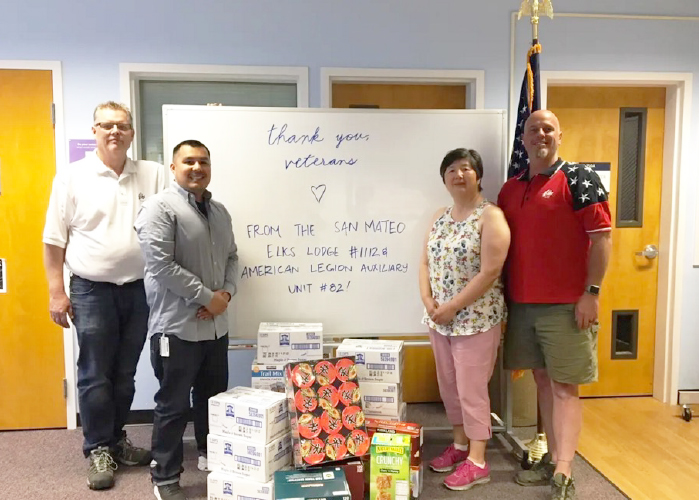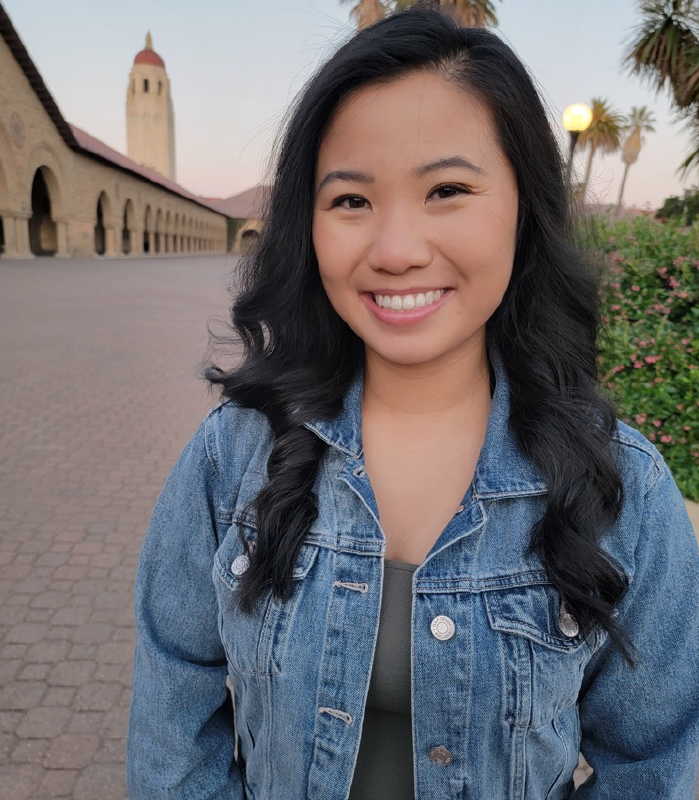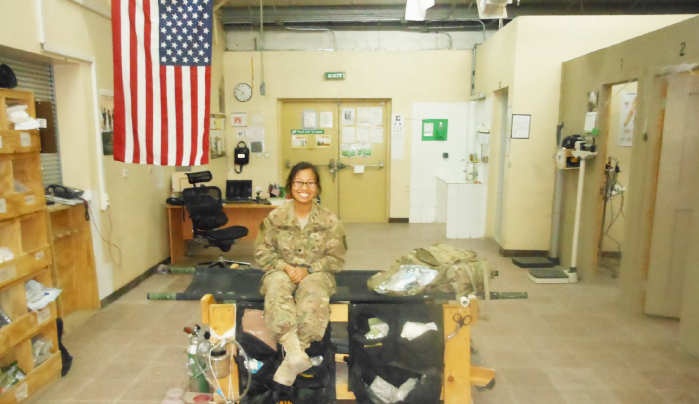Veterans Resource and Opportunity Center
Luis Padilla offers fellowship and support to CSM’s 335-strong military community
Tina Wong didn’t want to follow her peers’ path to college when she graduated from her San Jose high school. She enlisted in the Army, serving as a medic with the 3rd Brigade, 10th Mountain Division at Fort Polk, La., and in 2015-16 in the Eastern Region of Afghanistan.
When Wong left the service, she didn’t know what to do. So she and her husband, Kristian Culla, whom she met in the Army, enrolled at College of San Mateo. There, they encountered the Veterans Resource and Opportunity Center, a strong resource in Building 16 that helps CSM’s military community—currently 335 veterans, dependents, and active-duty service members—navigate their civilian lives.
Now, Wong is a senior in economics at Stanford University, having graduated from CSM in 2019 with an AA in economics and an AS in business administration. Culla is finishing up his biotechnology degree at San Francisco State. CSM’s Veterans Resource and Opportunity Center was key in their educational path.
“It was really nice of CSM to acknowledge its veterans, to create a presence on campus that I could physically go to and feel at home,” Wong said. “When I got back to school, I had no idea how to navigate, let alone know how to use my education benefits. It was nice to have people tell us what we could expect.”
The center provides a refuge, both physically and as a source of information, said CSM veterans resources coordinator Luis Padilla, a Marine veteran and Skyline College graduate who has led the VROC (folks pronounce it VEE-rock) since 2017.
“Aside from being the hub for the benefits and enrollment processes, it’s the hub for our student veterans’ club,” Padilla said. “It’s a social space that adds to the academic side of the student experience. We have weekly coffee hours. We bring in food every once in a while just to make it fun.”
Veterans are typically older than most CSM students, with strong work ethics and skills. Yet their transition to civilian life can be a bumpy one, Padilla said.
“They have a maturity level. They get down to it,” he said. “But the biggest challenge, especially for the ones who just got out, is that civilian life is much less structured than the military. All of a sudden, they have a buffet of life options.”
“At the center, student veterans can get almost every question answered,” Padilla said. “If we don’t have the answer, we connect them with someone who does.”
In addition to its drop-in events and sessions on careers and university transfer, the VROC hosts a CSM counselor for veterans and also brings in a counselor from the VA to talk to students.
And, while higher education benefits are a big draw of military service, managing those benefits specifically to each person’s situation and goals can be complex.
In the Bay Area, veterans attending college full time can receive up to $4,800 each month they are in class for a total of 36 months. For some, including those who support families, it makes sense to tap those benefits right away.



Others defer them while attending community college and save their benefits, as Padilla did, for upper-division work and graduate school. Padilla helps students navigate the choices to get what he calls “the most bang for the buck.”
Wong remembers the center as so rich in support and in the people it attracted that even chance encounters there changed her life.
“At CSM, I had so many chance encounters through VROC that led me [to Stanford]. One random day I had lunch at VROC—something I never did. Another student was there who told me about this incredible job at a security company for big tech firms.” As what she modestly calls “a greeter with analytical skills,” Wong found it inspiring to see, let alone help protect, tech titans whom she had previously seen only on the news. “And it paid very well, and I ended up working my way through school.”
The VROC also hosts college ambassadors—CSM alumni veterans who’ve gone on to four-year colleges. One such visitor, even though Wong never met him, put her on her path to Stanford.
“I was only planning to apply to CSUs and UCs,” she said. “After I submitted my state-school apps, I had a little time. A veteran who had just transferred to Stanford a little while before I started at CSM did an application info session in the VROC. I missed the session, but he left a whiteboard of resources. Nobody erased it. There was written in a little tiny corner ‘Service2School,’ a nonprofit that pairs student veterans with ambassadors who guide them through the college application process. I Googled it.”
Service2School’s chief operating officer, Jim Selbe, spoke with Wong at length about her academics and aspirations, and encouraged her to apply to Stanford.
“At first, I thought, I don’t want to go to Stanford. It’s so pretentious. I didn’t think their values would align with mine. In truth, I just didn’t know much about it.
“But I really dove into the application questions. I had a really good time answering them. I processed a lot of things that I’d never really thought about.
“I wish more people understood the unique challenges veterans face,” she said. “In particular, how much community means to us, whether or not we realize it. When I first got out, I wanted to disassociate from the military and my veteran identity. But I was running away from a really important part of myself.”
She is happy at Stanford. “Growing up I rarely ever ‘found people,’” she said. “I came here and I ‘found them.’ I felt comfortable because we’re all so different.” She even met Stephen McReynolds, the student veteran who left the whiteboard of college application resources on the VROC whiteboard.
Wong remains involved with military-affiliated communities, both at Stanford and CSM. For two years, she has organized monthly college-application info sessions for military veterans and advertised them to community colleges, both over Zoom and live at CSM.
“I was so grateful for the opportunities I had and I wanted to increase other people’s luck by giving them the information that I had,” she said. “My chance encounters with successful people and watching them. How many resources and peers I had behind me to review my application.”
“For me, gratitude and ‘paying it forward’ are always top of mind.”’

